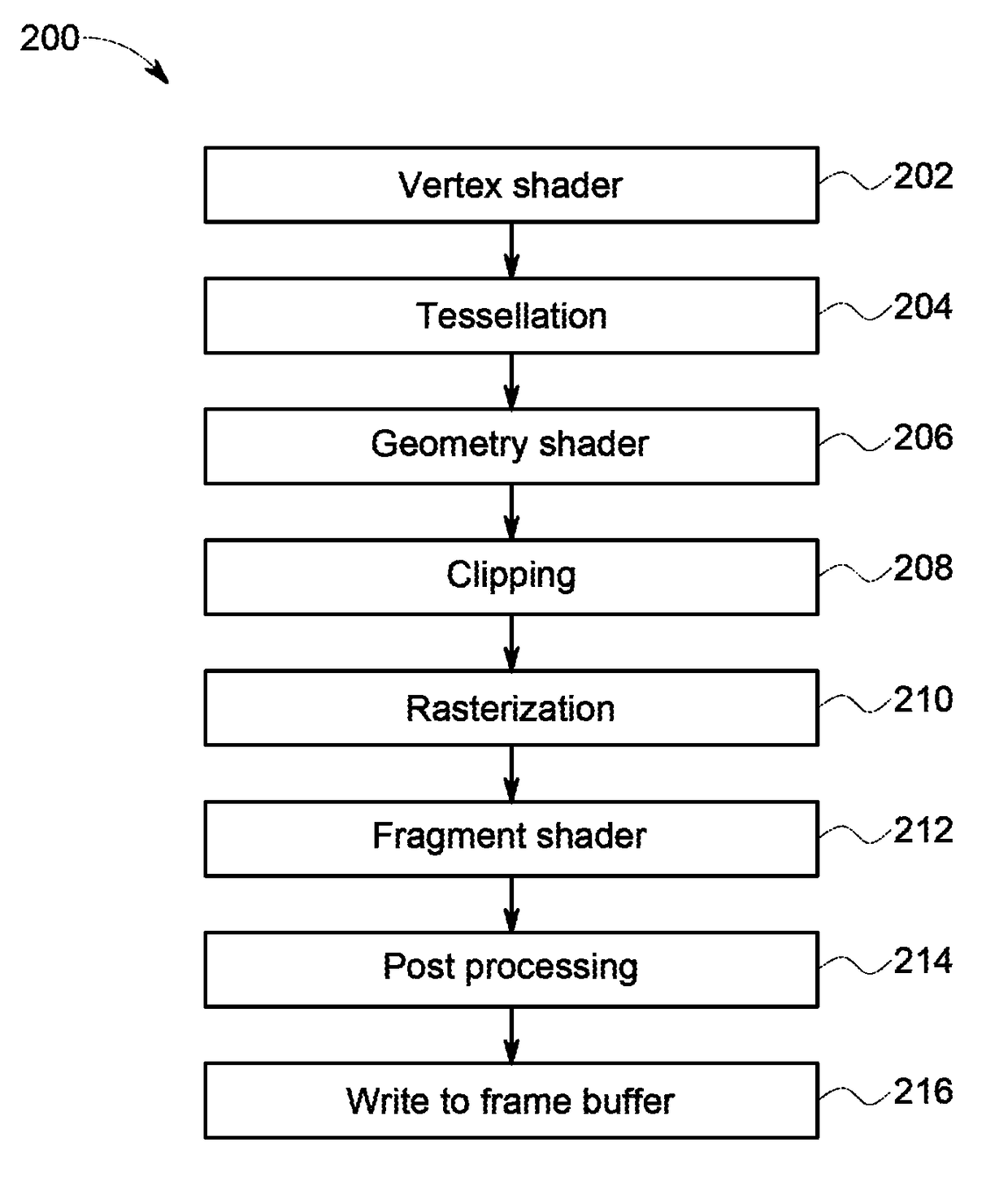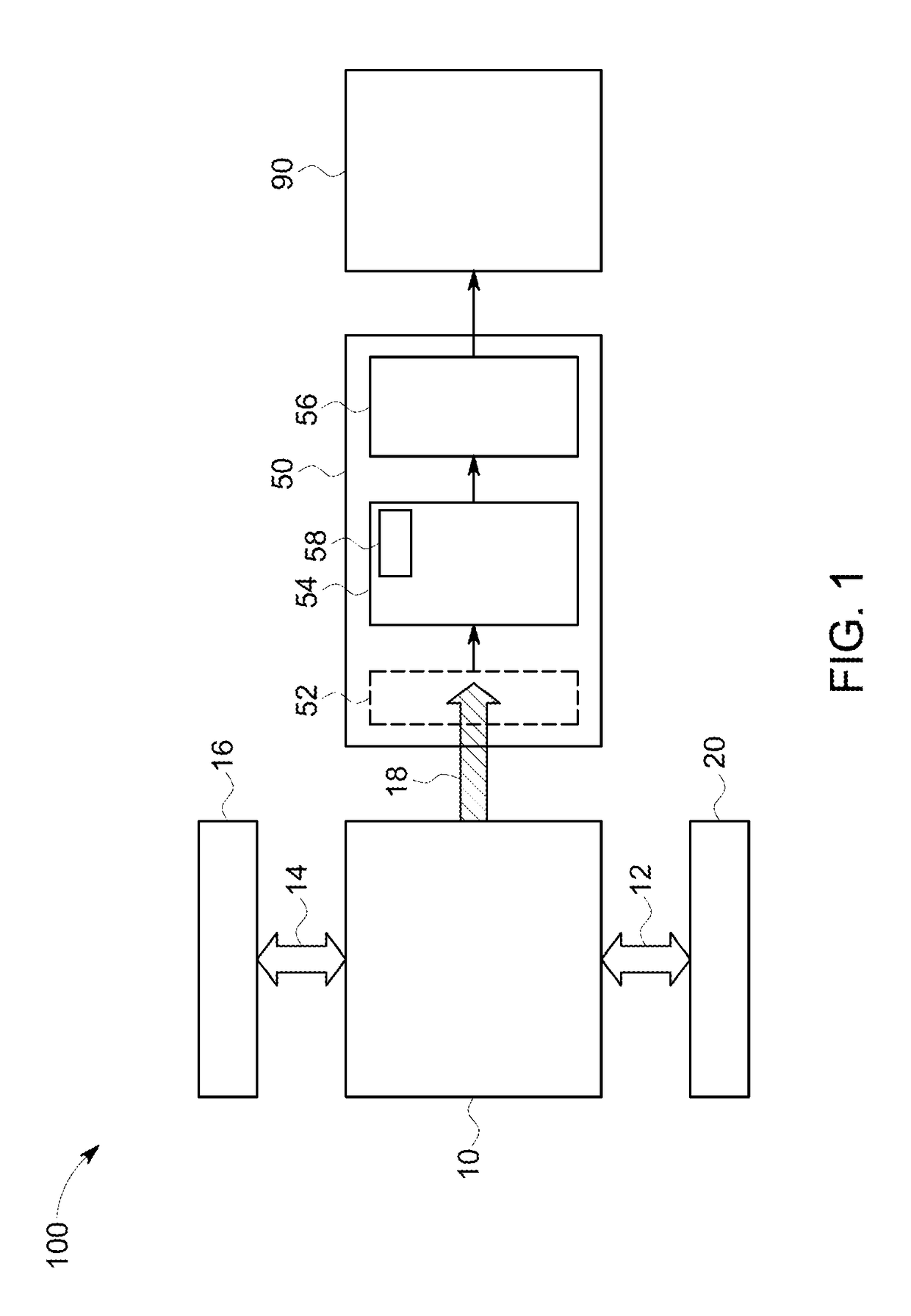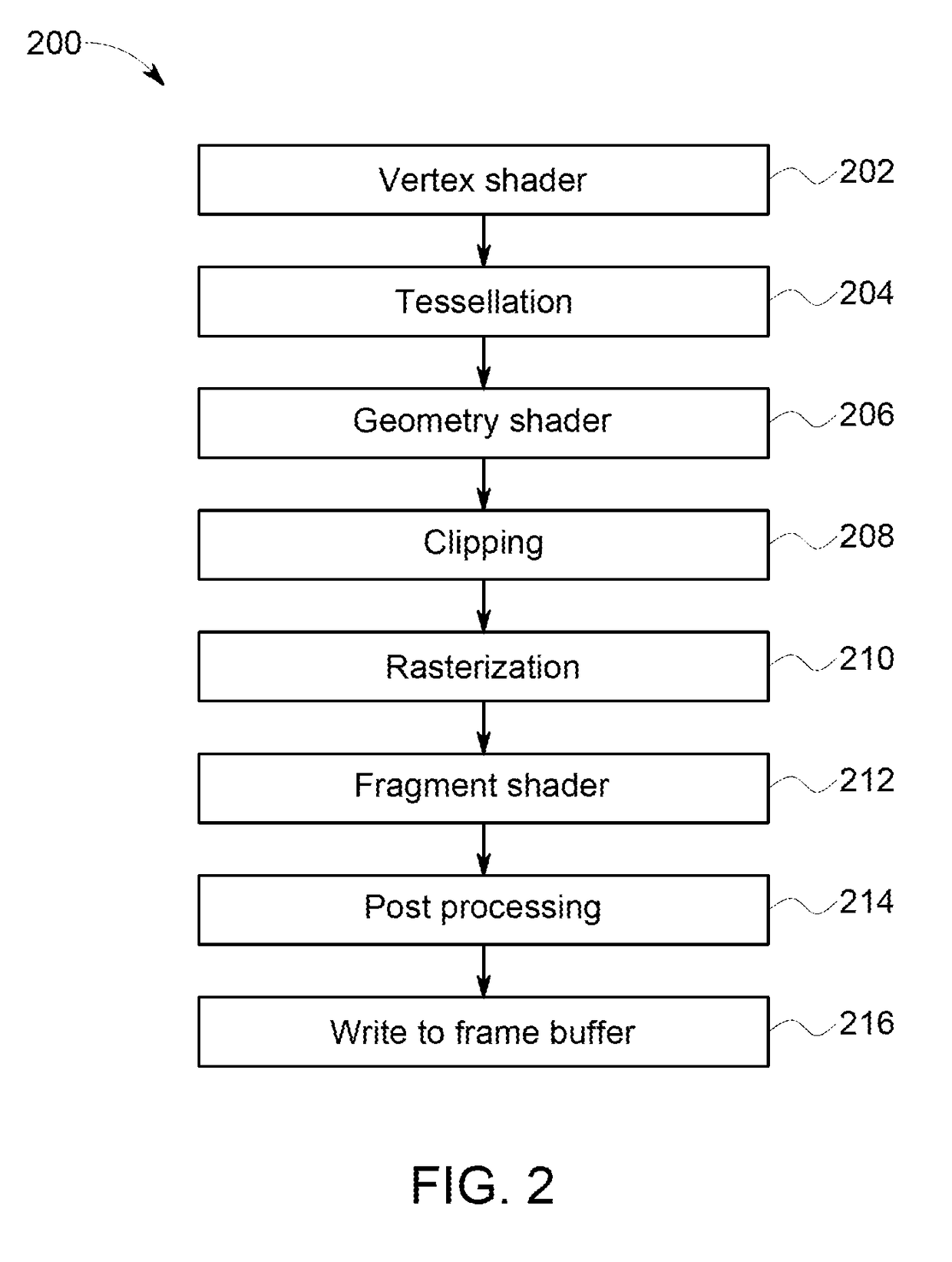Avionics display system
a display system and display technology, applied in the field of aircraft display systems, can solve the problems of increasing the developer time needed, increasing coding length, and increasing the processing power required, so as to reduce the amount of data that needs to be transferred, reduce the complexity of coding, and simplify the effect of coding
- Summary
- Abstract
- Description
- Claims
- Application Information
AI Technical Summary
Benefits of technology
Problems solved by technology
Method used
Image
Examples
Embodiment Construction
[0026]FIG. 1 shows an avionics display system 100 in accordance with an embodiment of the present innovation. The avionics display system 100 uses an improved graphics processing technique for displaying a scene in an aircraft cockpit. Additionally, it enables the use of standard components, that can be already standards certified, cheaper, simpler and / or lighter, such that reliability is improved and so that certification by various aviation authorities (FAA, CAA etc.) of the whole system may be made more likely.
[0027]The avionics display system 100 includes a central processing unit (CPU) 10. CPU 10 is connected to avionics 20 through avionics bus 12. Data relating to flight instruments is transmitted to the CPU 10 through the avionics bus 12, is then processed by the CPU 10 and subsequently used for displaying flight data on a display 90. In certain embodiments, CPU 10 may be part of a redundant system, for example, including a plurality of similar CPU's that process substantiall...
PUM
 Login to View More
Login to View More Abstract
Description
Claims
Application Information
 Login to View More
Login to View More - R&D
- Intellectual Property
- Life Sciences
- Materials
- Tech Scout
- Unparalleled Data Quality
- Higher Quality Content
- 60% Fewer Hallucinations
Browse by: Latest US Patents, China's latest patents, Technical Efficacy Thesaurus, Application Domain, Technology Topic, Popular Technical Reports.
© 2025 PatSnap. All rights reserved.Legal|Privacy policy|Modern Slavery Act Transparency Statement|Sitemap|About US| Contact US: help@patsnap.com



